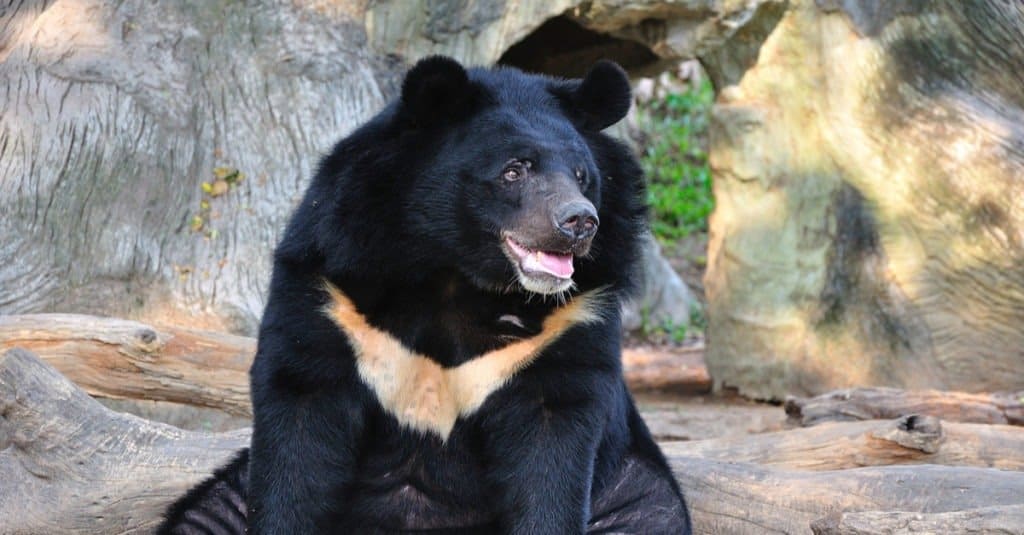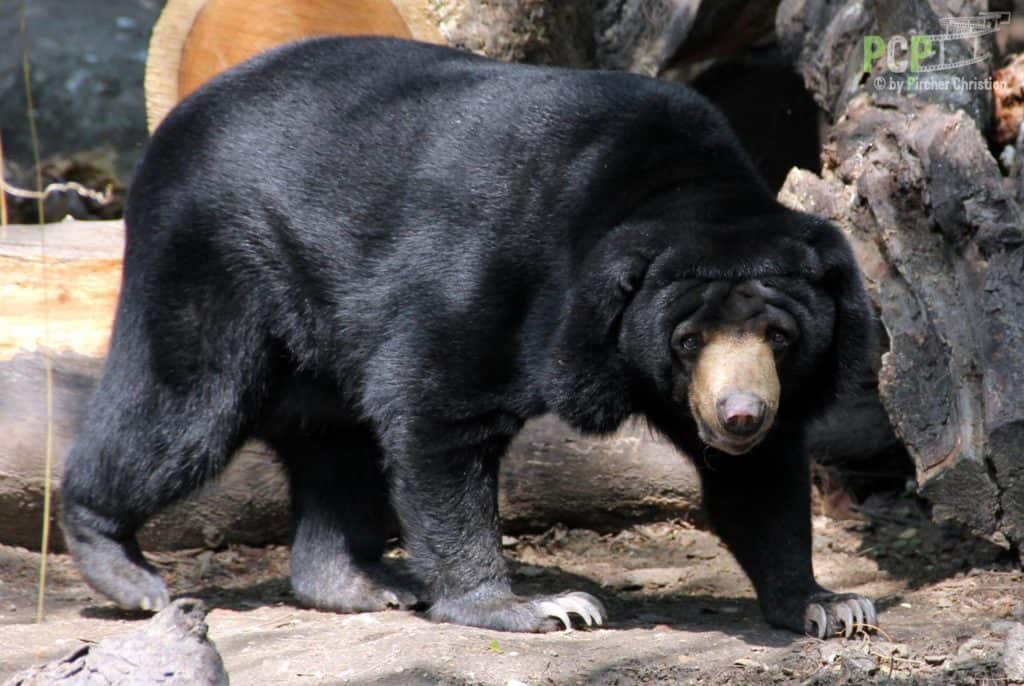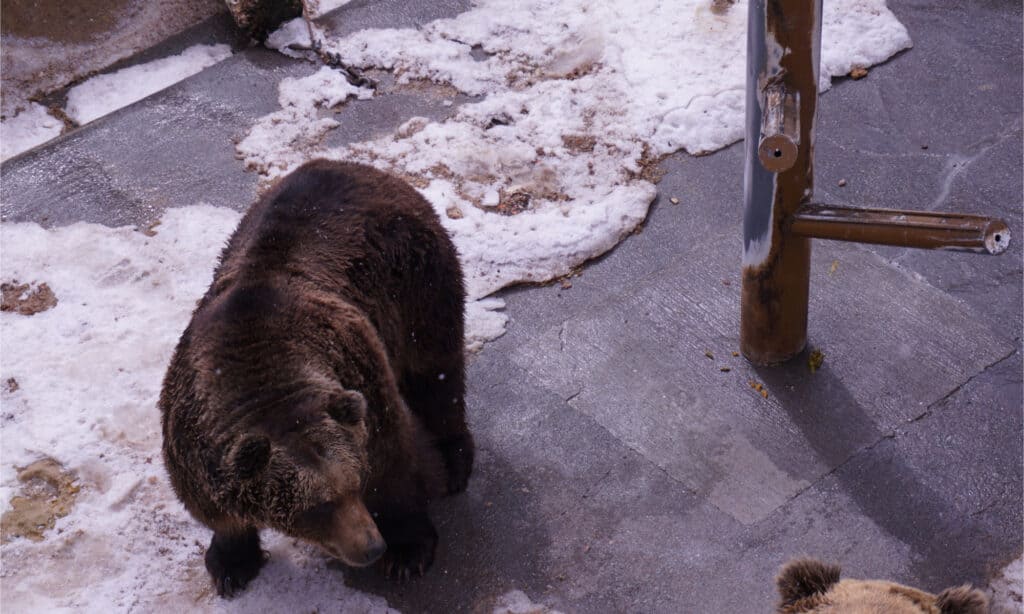The lively alleys of Tokyo, the grandeur of Mount Fuji, and the magnificent culture, including clothing, music, and art, are just a few of Japan’s many attractions. However, you may not be aware that Japan is also home to bears. Unlike other countries in Europe and the Americas, Japan only has a pair of majestic bear species. So, what bears live in Japan?
What Bears Live in Japan?
Only two bear species can be found in Japan: the Asiatic black bear and the Ussuri brown bear, also known as the Ezo brown bear. Throughout Japan’s history, bear attacks have been the stuff of mythology, myth, and some tragic stories. Black bears can be found on the islands of Honshu and Shikoku. These Asiatic black bears can also be found in other areas in Asia, including India, Southeast Asia, China, and Russia. Let’s explore the two bear species living in Japan, what they eat, what kind of habitat they settle in, and other fascinating facts.
1. Asiatic Black Bear

Asiatic black bears are distinguished by their glossy black coats with a whitish crescent moon-shaped mark on the chest.
©Tigger11th/Shutterstock.com
The Asiatic black bear (Ursus thibetanus), also known as the Asian black bear, Tibetan bear, Himalayan bear, or moon bear, is a bear species that can be found in Southeast Asia, the Himalayas, mountains along Afghanistan through Pakistan and India, Burma, Bhutan, Taiwan, and portions of eastern Asia, including Japan. The species is listed as “vulnerable” on the Red List of endangered species maintained by the International Union for Conservation of Nature. They are endangered due to the loss of forest habitat and overhunting for bile and other internal organs for the traditional Asian pharmaceutical industry. These are issues that bears face throughout Asia, not just in Japan.
Appearance
The Asiatic black bear is distinguished by its glossy black coat with a whitish crescent moon-shaped mark on the chest. Its long, coarse neck and shoulder hair form a modified mane. The crescent’s shape and size vary widely, and it may even be absent. These bears are among the largest species of bears in the world. Male Asiatic black bears are more slender and lightly built than brown bears, weighing between 130 and 440 pounds. Females weigh from 88 and 276 pounds. Although black bears have exceptional senses of hearing and smell, they have weak eyesight. They’re great at digging, climbing trees, and swimming. These medium-sized bears are endemic to Asia and have completely adapted to living in the trees.
Diet
Asiatic black bears are omnivores and are very opportunistic when feeding. Insects, ants, insect grubs, honey, river crabs, nuts, beehives, fruit, small mammals, birds, and carrion are all consumed by these species. Although not often, Asian black bears may also attack and devour domestic livestock on some occasions. While they have been seen eating small deer and other animals, most of the flesh they consume comes from remains. Acorns are black bears’ principal dietary source in Japan. Seasonally, their nutrition changes. They stock up on young shoots, bulbs, buds, blooms, and tubers in the spring and summer. They eat acorns, chestnuts, beechnuts in the fall and berries if they can locate them.
Habitat
Asiatic black bears prefer living in deciduous and mixed forests and thornbush woodlands, especially in hilly and mountainous places. They have been spotted at elevations above 9,900 feet in the summer and at lower altitudes in the winter. They are thought to hibernate in the northern sections of their range throughout the winter.
Are Asiatic Black Bears Dangerous?

The Asiatic black bear is hostile towards humans.
©Christian Pircher / CC BY-ND 2.0, Flickr – License
The Asiatic black bear has a notoriety for being particularly hostile to humans. However, the majority of the reported attacks happen when the bears are approached abruptly in close quarters. As a result, Asian black bears are thought to be more aggressive than brown bears, who live in more open areas and are thus less likely to be startled by arriving humans. Despite tales of human attacks, specialists claim they avoid people by instinct and only respond aggressively when their cubs are harmed, cornered, or attacked.
2. Ezo Brown Bear or Ussuri Brown Bear

The Ussuri brown bear is one of the largest brown bear species.
©Ana8815/Shutterstock.com
The Ussuri brown bear (Ursus arctos lasiotus), commonly known as the Ezo brown bear or the black grizzly bear, is a brown bear subspecies or population in the Eurasian brown bear family. Experts are still attempting to determine if these bears represent a subspecies of brown bears or a millennia-old population of Eurasian brown bears. However, these bears are not part of the grizzly bear subspecies despite their name. They are brown bears at their core, although one of the largest brown bear species. The Ussuri brown bear is comparable to the Kodiak brown bear in terms of size.
Appearance
The Ussuri brown bear resembles the Kamchatka brown bear but with a somewhat different skull development. It’s also a little darker, with some people mistakenly believing it’s completely black. The Ussuri brown bear, like the Asian black bear, is one of the world’s largest bear species. Male Ussuri brown bears weigh 880 pounds and can weigh up to 1,210 pounds. They usually grow between 6 and 9 feet long.
Diet
Ussuri brown bears are omnivorous hunters that typically feed on vegetation and other plant materials such as sap, seeds, berries, nuts, and grass shoots. They will, however, hunt and eat small and large mammals, as well as birds, fish (like salmon), and insects. They may devour any prey in their habitat because they are massive predators. In times of shortage, they eat larvae, wood-boring ants, and lily roots in addition to bilberries and nuts.
Habitat
Ussuri brown bears primarily dig burrows in hillsides. However, they do occasionally create ground nests or dwell in rock outcroppings. They are commonly found in Siberia’s Ussuri Krai, Sakhalin, Iturup Island, Amur Oblast, Shantar Islands, Kunashiri Island, the Korean Peninsula, northeastern China, and Japan’s Hokkaido.
Are Ussuri Brown Bears Dangerous?

Ezo brown bears are aggressive and ferocious animals.
©Napawn/Shutterstock.com
Both people and other bears find the male Ussuri brown bear aggressive and ferocious. Females are said to travel close to tiny human communities with their pups for males to avoid people. Many females with cubs approach fishermen and engage near people on the Shiretoko Peninsula, particularly in the “Banya” area. More than half a century ago, this unusual conduct was initially observed, with no reported deaths or accidents.
The photo featured at the top of this post is © TB studio/Shutterstock.com
Thank you for reading! Have some feedback for us? Contact the AZ Animals editorial team.






